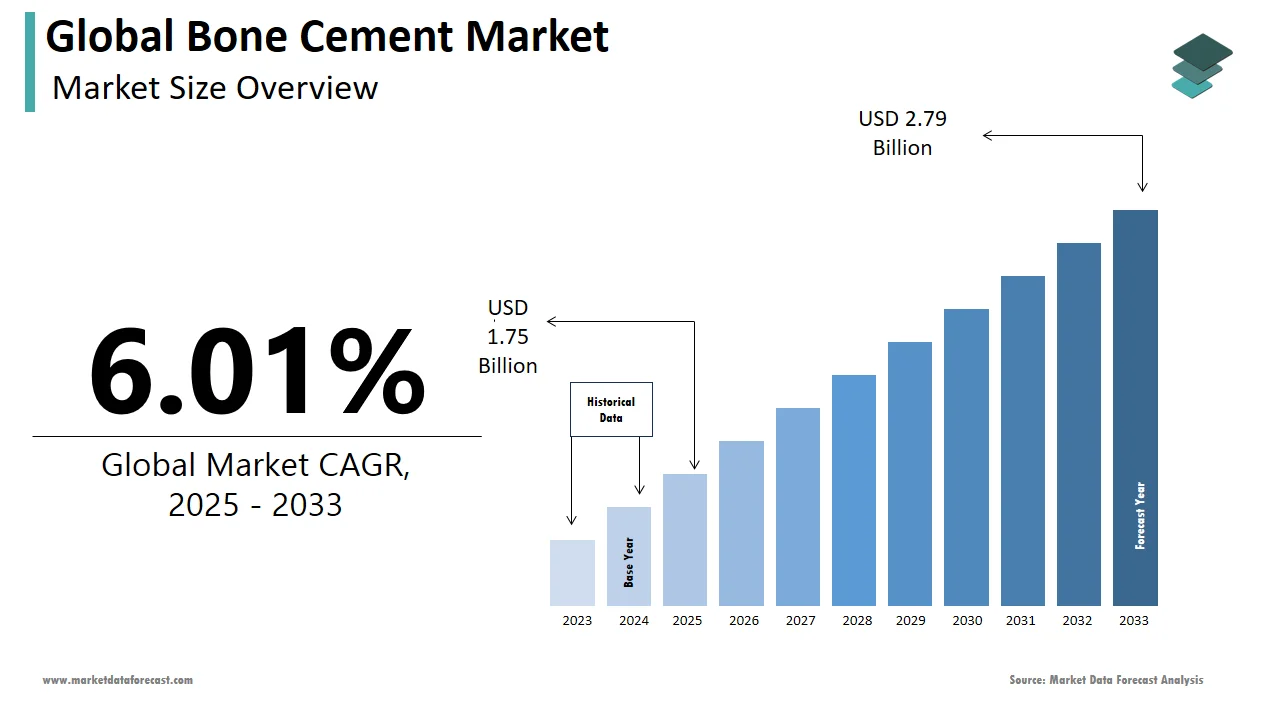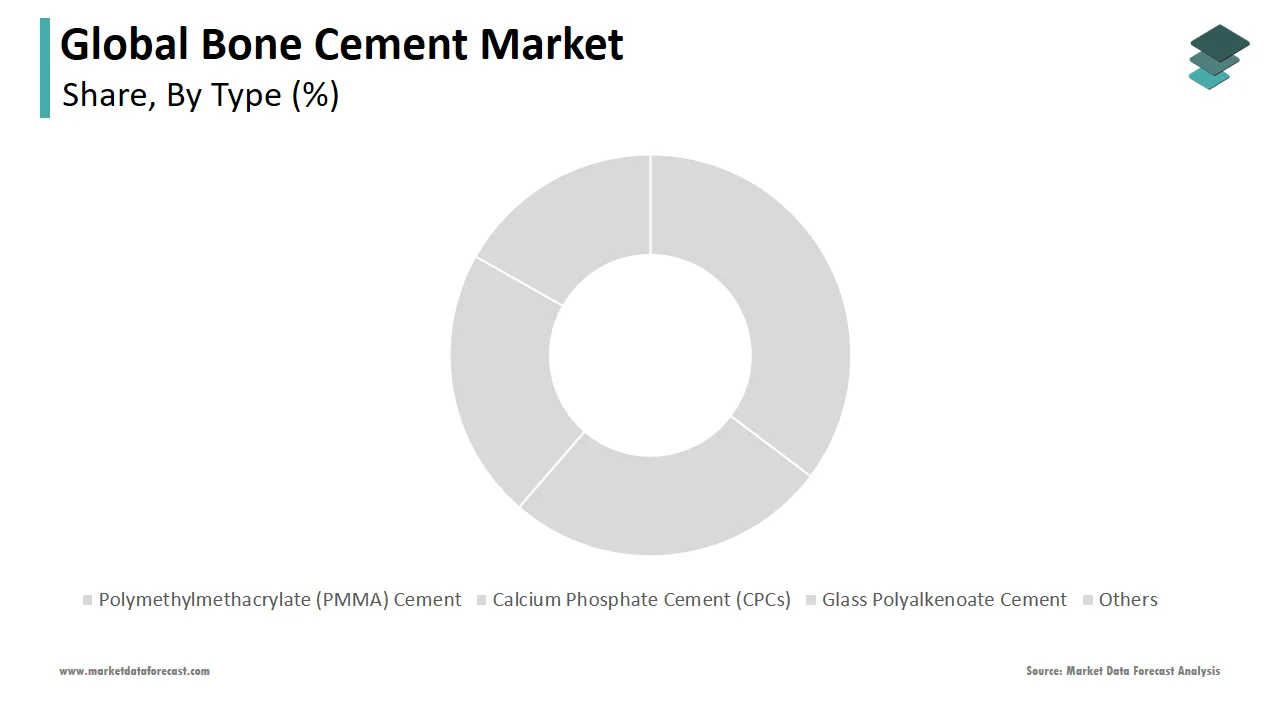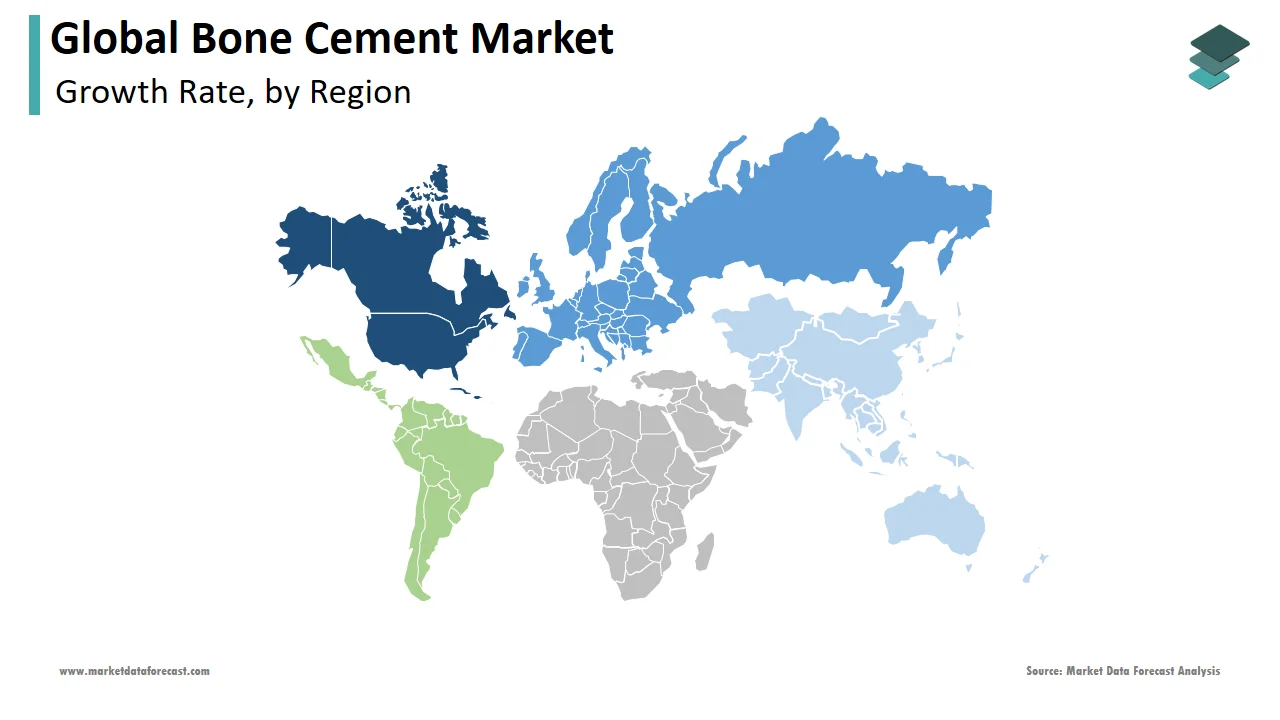Global Bone Cement Market Size, Share, Trends & Growth Forecast Report By Type, Application, End-User and Region (North America, Europe, Asia-Pacific, Latin America, Middle East and Africa), Industry Analysis From 2025 To 2033.
Global Bone Cement Market Size
The global bone cement market was worth US$ 1.65 billion in 2024 and is anticipated to reach a valuation of US$ 2.79 billion by 2033 from US$ 1.75 billion in 2025, and it is predicted to register a CAGR of 6.01% during the forecast period 2025-2033.

All orthopedic surgeons are familiar with bone cement. Although bone cement was once the gold standard in joint replacement surgery, its use has declined due to the introduction of press-fit implants that encourage bone growth. COVID-19 has had a significant impact on orthopedic research, and it can and should now confidently continue research by adapting and restructuring processes. The shortcomings, toxicity, and side effects of bone cement have recently been addressed. More research is needed and is currently underway in nanoparticle additives, improved bone cement interfaces, eliminating or reducing undesired side effects, and other developments to improve bone cement quality.
MARKET DRIVERS
The growing population and increasing aging population worldwide are resulting in the increasing demand for replacement surgeries and joint repair due to torn, worn-out, or bone tissue and damaged cartilage, which is expected promoting the global bone cement market growth.
According to WHO, the world's population was 2.8 billion in 1955 and is now around 5.8 billion. It will grow by nearly 80 million people annually, reaching around 8 billion by 2025. The average life expectancy at birth was only 48 years; in 1995, it was 65 years; and in 2025, it will be 73 years. Today, more than about 50 million people live in countries where the average life expectancy is less than 45. Today, more than 5 billion people in 120 countries have a life expectancy of more than 60 years. According to WHO, the world's growing elderly population. The number of people aged 60 and up will increase from 900 million to 2 billion between 2015 and 2050. The population is aging at a faster rate than in the past.
Globally, bone disorders such as Arthritis, Osteoarthritis, Osteoporosis, Sprains, Tendonitis, and Bursitis are increasing, and rising orthopedic injuries are expected to boost the growth rate of the global bone cement market.
According to the WHO, every year, approximately 1.35 million people are killed in traffic accidents. Around 5.8 million people die because of injuries each year. Non-fatal injuries affect between 20 and 50 million more people, with many suffering disabilities resulting from injuries. Every year, approximately 1.66 million hip fractures occur worldwide. Osteoporosis is also a major issue for older men, accounting for 20% of symptomatic spine fractures and 30% of hip fractures in fracture-prone countries. The prevalence of spinal deformities in Scandinavian countries is higher than in Mediterranean countries. Hip fractures are less common in African Americans and New Zealand Maoris than Caucasians, whereas hip fractures are more common in the Indian population in Singapore.
There is an increasing demand for further development of materials used in joint replacement surgeries and advancements in joint repair technology.
Joint replacement is a surgical procedure that involves removing a damaged joint or arthritic and replacing it with an artificial joint known as a prosthesis. Total joint replacement surgery is one of the most successful treatments for debilitating knee or hip pain and chronic pain that has not responded to other treatments. In the US, approximately over 450,000 hip replacements and 790,000 total knee replacements are performed each year. This figure is expected to rise as its population ages. Total knee replacement surgery is one of the most successful procedures in the history of medicine. Most knee replacement patients are between the ages of 50 and 80. When the knee is damaged or diseased, a knee replacement can improve the quality of life. Knee injuries and arthritis are two common causes of these knee problems.
Tissue engineering and regenerative medicine researchers have advanced the development of advanced materials for musculoskeletal repair by incorporating growth factors, nanomaterials, and antibiotics into the repair material. For over two decades, scientists have debated regenerative medicine, including stem cell treatments, gene therapy, and the repair or regeneration of various organs and tissues.
MARKET RESTRAINTS
The use of bone cements the same risks as any other medical procedure. One of the most serious drawbacks of bone cement in joint replacement is cement fragmentation and foreign body reaction to wearing debris, which causes periprosthetic osteolysis and prosthetic loosening. The monomer appears to be toxic, and allergic reactions to the constituents of bone cement are possible. Wear particles generated by roughened metallic surfaces and PMMA cement promote local inflammatory activity, resulting in chronic hip replacement complications. The high cost of treating joint replacement surgery and orthopedic injuries is impeding the bone cement market. Furthermore, the prevalence of unregistered practitioners is expected to impact the bone cement market in the future significantly negatively. Several complications have emerged as a result of the surgery. Stringent regulatory procedures can hamper the market for bone cement treatments.
REPORT COVERAGE
|
REPORT METRIC |
DETAILS |
|
Market Size Available |
2024 to 2033 |
|
Base Year |
2024 |
|
Forecast Period |
2025 to 2033 |
|
CAGR |
6.01% |
|
Segments Covered |
By Type, Application, End-User, and Region. |
|
Various Analyses Covered |
Global, Regional, and country-level analysis; Segment-Level Analysis, DROC; PESTLE Analysis; Porter’s Five Forces Analysis, Competitive Landscape; Analyst Overview of Investment Opportunities |
|
Regions Covered |
North America, Europe, APAC, Latin America, Middle East & Africa |
|
Market Leaders Profiled |
Smith & Nephew, Stryker, Arthrex, Inc., Zimmer Biomet, 3M, Orthofix International, DJO Global, Heraeus Holding, and TEKNIMED., and Others. |
SEGMENTAL ANALYSIS
By Type Insights

The polymethylmethacrylate segment is expected to dominate the global bone cement market during the forecast period. Polymethylmethacrylate bone cement technology has progressed from the industrial Plexiglas. Polymethylmethacrylate bone cement is used for implant fixation in various areas such as Orthopaedic and trauma surgery. Due to a surge in accidental and bone fractures, the rising demand for Polymethylmethacrylate bone cement is expected to increase the market growth.
By Application Insights
The Arthroplasty segment is predicted to register the fastest growth rate during the forecast period based on the application. As per the reports, Arthroplasty generated the largest revenue share globally. There are around 550,000 knee replacements and 300,000 hip replacement surgical procedures are performed alone in the United States every year. Bone cement is used for kyphoplasty and vertebroplasty, which will further boost market growth.
By End-User Insights
The hospital segment is projected to be the most dominating segment throughout the forecast period, held the leading end-use category, and witnessed over 47.7% during the previous year. The market growth is augmented by factors such as the presence of a large patient pool, the rising number of hospitals, and the prevalence of accidents.
REGIONAL ANALYSIS

The North American region was one of the most prominent regions in the global market and is predicted to register healthy growth during the forecast period. Y-O-Y's growth in the number of surgeries across the North American region is majorly accelerating the market’s growth. In the North American regional market, the U.S. is estimated to dominate due to the rising trauma cases and growing demand for orthopedic bone cement. On the other hand, the Canadian market is witnessed to showcase healthy growth during the forecast period.
The European market held the second largest market share in the global bone cement market in 2020 and is predicted to account most substantial share during the forecast period. The government's growing healthcare expenditure and investment are propelling the market growth in this region.
Asia Pacifica is one the fastest growing regions in the global bone cement market. Emerging countries like India and China significantly contribute to the APAC regional market growth. The market is most likely to witness its growth in the years to come. China accounted for the largest market share over the forecast period. India's bone cement market growth is expected to grow due to the factors such as a rising preference for bone cement products over bone grafts. The increasing demand for arthritis and periodontal diseases in India will likely create market growth for bone cement in this region.
The Middle East Africa bone cement market is anticipated to witness moderate bone cement growth in the coming years. A rising number of musculoskeletal surgeries are expected to witness a better market share over the forecast period.
KEY MARKET PLAYERS
Some of the notable participants of the global bone cement market profiled in this report are Smith & Nephew, Stryker, Arthrex, Inc., Zimmer Biomet, 3M, Orthofix International, DJO Global, Heraeus Holding, and TEKNIMED.
MARKET SEGMENTATION
This research report on the global bone cement market has been segmented and sub-segmented based on type, application, end-user, and region.
By Type
- Polymethylmethacrylate (PMMA) Cement
- Calcium Phosphate Cement (CPCs)
- Glass Polyalkenoate Cement
- Others
By Application
- Arthroplasty
- Kyphoplasty
- Vertebroplasty
By End-User
- Hospitals
- Ambulatory Surgical Centres
- Clinics
By Region
- North America
- Europe
- Asia-Pacific
- Latin America
- The Middle East and Africa
Frequently Asked Questions
What is the growth rate of the bone cement market?
The global bone cement market is expected to grow at a CAGR of 6.01% from 2025 to 2033.
What are the key factors driving the growth of the bone cement market?
The growing prevalence of orthopedic diseases and disorders, the growing geriatric population, and the rise in demand for minimally invasive surgeries are driving the bone cement market growth.
Which regions are leading the bone cement market?
The bone cement market is led by North America and Europe, with Asia-Pacific expected to show significant growth in the coming years.
What are some of the challenges faced by the bone cement market?
High cost of bone cement products, the potential for complications such as infection or loosening of implants, and the need for skilled surgeons to perform the surgeries are primarily challenging the growth of the bone cement market.
Who are some of the key players in the bone cement market?
Stryker Corporation, Zimmer Biomet Holdings Inc., DJO Global, Inc., Smith & Nephew plc, and Heraeus Holding GmbH are some of the noteworthy companies in the bone cement market.
Related Reports
Access the study in MULTIPLE FORMATS
Purchase options starting from $ 2500
Didn’t find what you’re looking for?
TALK TO OUR ANALYST TEAM
Need something within your budget?
NO WORRIES! WE GOT YOU COVERED!
Call us on: +1 888 702 9696 (U.S Toll Free)
Write to us: [email protected]
